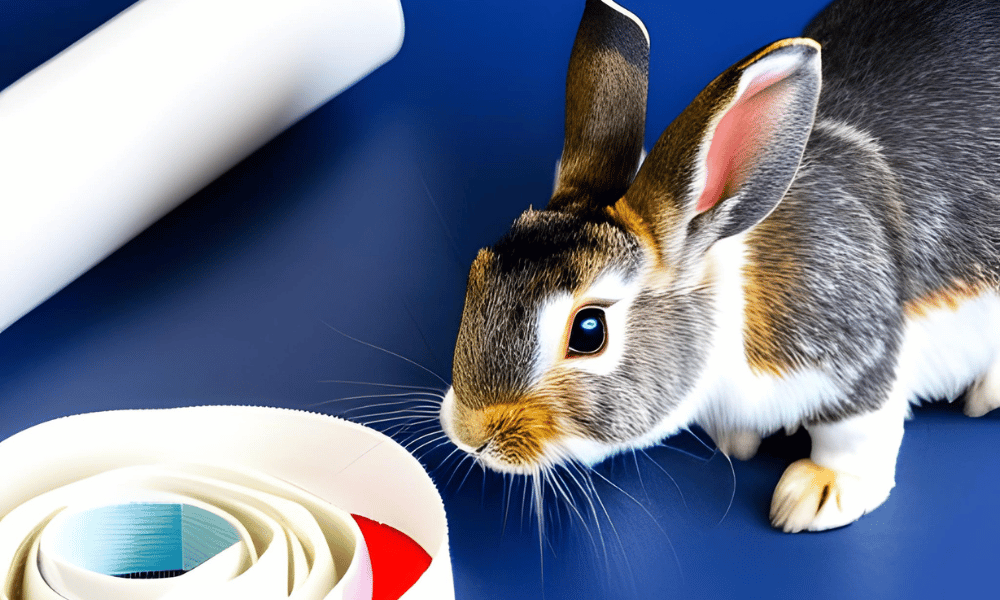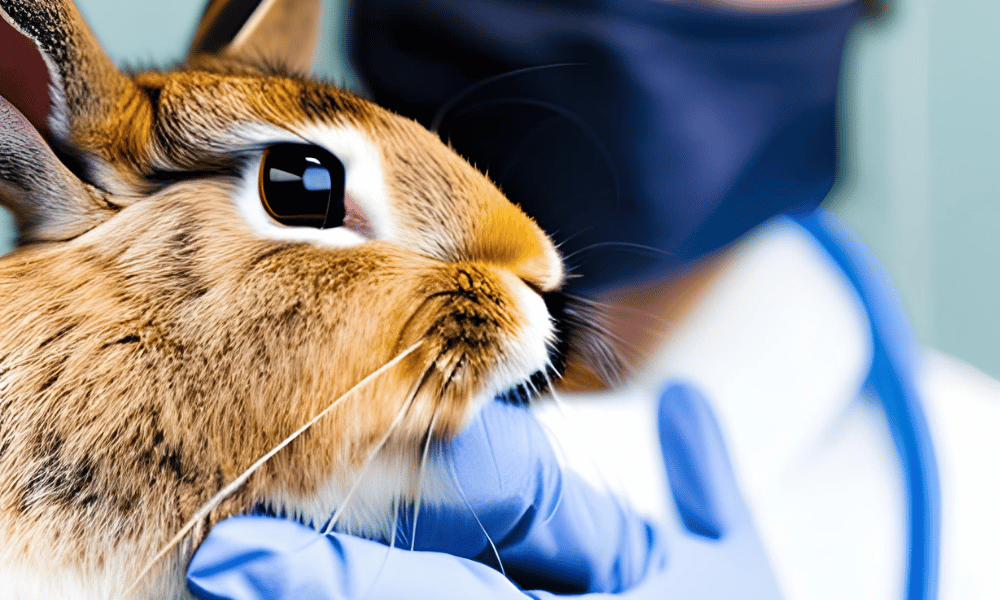Page Contents
Did you know rabbits have delicate bones, making them more prone to fractures? That’s why it’s essential to understand rabbit bone fragility and learn how to provide proper care and treatment for these furry companions. In this blog post, we’ll explore the factors contributing to bone fragility in rabbits, discuss “Will a rabbit’s broken leg heal on its own?” and delve into various treatment options, recovery, and prevention strategies. So let’s hop into it and learn how to keep our rabbits healthy and safe!

Short Summary
- Understanding rabbit bone fragility is vital to preventing and treating broken legs.
- Veterinary care is essential for rabbits with broken legs; it provides the best treatment and helps ensure a successful recovery.
- Taking steps like creating a safe environment, getting regular checkups, and providing exercise can help prevent fractures in rabbits.
Understanding Rabbit Bone Fragility
Rabbit bone fragility is vital for rabbit owners, as their delicate bones make them more susceptible to injuries and fractures. Understanding the factors contributing to bone fragility and its consequences can help prevent injuries and ensure proper care for rabbits with broken legs, such as a rabbit’s leg.
Genetics, nutrition, and environment can contribute to bone fragility. Genetics can be a problem.
Factors contributing to bone fragility
Rabbits have lightweight and agile bodies, making them more prone to fractures. A lack of exercise can also make their bones more brittle and susceptible to breaking. Therefore, it is crucial to handle rabbits gently and provide them with an environment that encourages safe movement and exercise to prevent rabbit breaks and understand when rabbits break their bones due to accidents.
In some cases, rabbits can accidentally damage their spinal cord due to their delicate bone structure. A strained spine in an unnatural direction can result in pain, discomfort, and even bladder and bowel function loss if left untreated.
Consequences of bone fragility
If left untreated, bone fragility in rabbits can lead to dire consequences, such as serious injuries, pain, and complications. An untreated broken leg, a type of broken bone, can cause significant issues like pain and difficulties, which are particularly dangerous for prey animals like rabbits.
A broken back in rabbits can result in partial paralysis and nerve damage, causing them to drag their legs. In such cases, it is vital to keep the rabbit calm and seek immediate veterinary care to prevent further complications and ensure proper treatment.
Can a Rabbit’s Broken Leg Heal on Its Own?
A rabbit’s broken leg will not heal on its own. When a rabbit’s bone breaks, it tends to fragment, making it impossible for the bone to reattach or grow properly without medical assistance. Thus, seeking veterinary care is vital for proper treatment and recovery.
Ignoring a broken leg in rabbits can lead to infection, improper bone alignment, and health issues. Moreover, a fractured back in rabbits can lead to paralysis or nerve damage, resulting in the rabbit’s inability to take care of itself and requiring its owner to provide additional care.
Possible complications
Untreated broken legs in rabbits can lead to many complications, including infection, improper bone alignment, and further health issues. In the case of a broken back, the rabbit may experience partial paralysis, nerve damage, and loss of bladder control.
It is essential to seek veterinary care for a rabbit with a broken leg to avoid these complications and ensure a successful recovery. A quick response can significantly improve the rabbit’s healing process and overall well-being.
Importance of veterinary care
Veterinary care plays a crucial role in treating rabbits with broken legs. A veterinarian can identify the injury, provide treatment options, and monitor the healing progress to ensure the best possible outcome for the rabbit. Before bringing the rabbit to the vet, it is essential to wrap it up in a warm towel to keep it calm and secure.
Proper veterinary care can help avoid potential issues and ensure the rabbit’s healing process is successful. With the guidance of a veterinarian, the rabbit can receive the best treatment and have a higher chance of fully recovering.
Treatment Options for a Rabbit’s Broken Leg
Various treatment options are available for a rabbit’s broken leg, depending on the severity of the injury and the rabbit’s overall health. Some common treatments include immobilization and splinting, surgery, and amputation. The veterinarian will decide the suitable treatment according to the specific situation of the rabbit.

Each treatment option has its advantages and challenges, so it’s essential to work closely with your veterinarian to ensure the best possible outcome for your rabbit. Remember that early intervention and proper care can significantly improve the chances of a successful recovery.
Immobilization and splinting
Immobilization and splinting are common treatments for less severe fractures, allowing the bone to heal in a controlled environment. This treatment involves using bandaging materials and splints to keep the rabbit’s leg in place, stabilizing the fracture and promoting healing.
By limiting movement at the fracture site, immobilization and splinting can prevent damage to the surrounding tissues and ensure the broken bones heal correctly. This non-surgical approach can be practical for some rabbits, depending on the severity and location of the fracture.
Surgery
Surgery may be necessary for more severe fractures or when splinting is insufficient for proper healing. In these cases, a veterinary surgeon may employ various techniques, such as:
- Splints or heavy bandages
- Bone plates
- External skeleton fixation systems
- Intramedullary techniques
The surgical approach will depend on the specific circumstances of the rabbit, the type of fracture, and its location. It is crucial to work closely with your veterinarian to determine the most appropriate surgical treatment for your rabbit’s broken leg to ensure a successful recovery.
Amputation
In extreme cases where the leg cannot be saved, amputation may be considered if it will still allow the rabbit to have a good quality of life. The amputation process involves surgically removing the affected limb, with the exact location of the amputation varying depending on the severity and location of the fracture.
While amputation may seem drastic, rabbits are highly adaptable creatures and can lead happy and healthy lives with three legs. Consult your veterinarian to determine if amputation is best for your rabbit’s situation.
Recovery and Rehabilitation
Recovery and rehabilitation are essential for a rabbit’s healing after a broken leg. During this period, the rabbit needs proper care, including cage rest, confinement, and potentially physical therapy, as recommended by the veterinarian. Ensuring your rabbit recovers smoothly is crucial; following these guidelines will help your rabbit recover effectively.
The recovery process can vary depending on the severity of the fracture, the treatment method used, and the rabbit’s overall health. Following the veterinarian’s advice and providing a supportive environment can help your rabbit regain strength, mobility, and overall well-being.
Cage rest and confinement
Cage rest and confinement play a vital role in preventing further injury and allowing the injured leg, in this case, the broken leg, to heal correctly in a wounded rabbit. During this period, the rabbit should be kept in a small, confined space with limited movement indoors and provided with soft, warm bedding.
Ensuring a clean environment is essential during recovery, as it helps prevent infections and other complications. Regularly check the rabbit’s cage for any signs of damage or wear and tear to maintain a safe and secure environment for your recovering pet.
Physical therapy
A veterinarian may recommend physical therapy to help the rabbit regain strength and mobility in the affected leg. This form of rehabilitation can be crucial to the rabbit’s recovery and overall well-being after a broken leg, especially when combined with appropriate pain medication.
The specific physical therapy exercises and duration will depend on the rabbit’s situation, behavior, and temperament. It’s essential to work closely with your veterinarian to develop a tailored treatment plan that meets your rabbit’s needs and ensures a successful recovery.
Preventing Broken Legs in Rabbits

Preventing broken legs in rabbits involves:
- Creating a safe environment
- Ensuring regular check-ups to maintain their overall health
- Minimizing the risk of falls, jumps, and entrapment in their cages
By following these steps, you can help your rabbit survive and ensure their safety and health by handling your rabbit correctly.
Regular veterinary check-ups can help detect potential issues early on and provide expert advice on diet and care.
Creating a safe environment
Providing a safe environment for your rabbit prevents injuries like broken legs. Keep their cage away from hazards like stairs or other objects that might cause them to fall, and ensure their living space is secure and spacious.
Regularly inspect the rabbit’s cage for signs of damage or wear and tear to maintain a safe environment. By creating a secure space for your rabbit to explore and exercise, you can help prevent broken bones and other injuries.
Regular check-ups
Regular veterinary check-ups are essential for maintaining your rabbit’s health and well-being. These check-ups can help:
- Establish a baseline of health
- Detect diseases early on
- Provide preventive care
- Monitor vital signs
Rabbits should receive check-ups at least once a year, but more frequent visits may be recommended depending on their age and health. During a check-up, the veterinarian will examine the rabbits:
- eyes
- ears
- teeth
- fur
They will look for any signs of infection or disease and provide expert advice on diet and care.
Summary
In conclusion, understanding rabbit bone fragility and proper care is essential to ensure the well-being of our furry friends. By creating a safe environment, seeking veterinary care for broken legs, and following the appropriate treatment and recovery plans, you can help your rabbit heal and prevent further injuries. Remember, prevention is vital, and regular check-ups can contribute to maintaining your rabbit’s overall health.
Frequently Asked Questions
Can a rabbit recover from a broken leg?
Though treatment options are available, recovery from a broken leg in a rabbit is not always guaranteed due to the long period of rest and rehabilitation required.
How do you treat a broken leg on a rabbit at home?
Gently wrap your rabbit in a clean towel and put it in its carrier. Talk to the rabbit in a low, soothing voice, and contact the vet immediately.
Avoid trying to splint or bandage the leg.
How do you treat an injured rabbit leg?
Surgery under a general anesthetic may be necessary for an injured rabbit leg, depending on the cause of the lameness. Be sure your vet confirms that your pet is stable before proceeding with any procedures.
How much does it cost to fix a broken rabbit leg?
Fixing a broken rabbit leg could range from $500 to $1500, depending on the severity and any necessary surgery.
Why is my rabbit’s spine sticking out?
Your rabbit may have lost weight, causing its spine to stick out and become more prominent. This can also cause its shoulder blades and hips to become more visible and even minor points on each side of the spine.